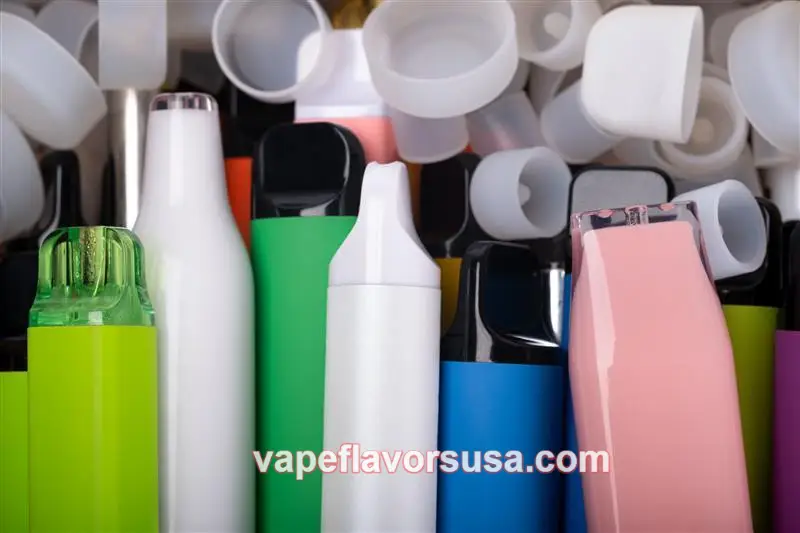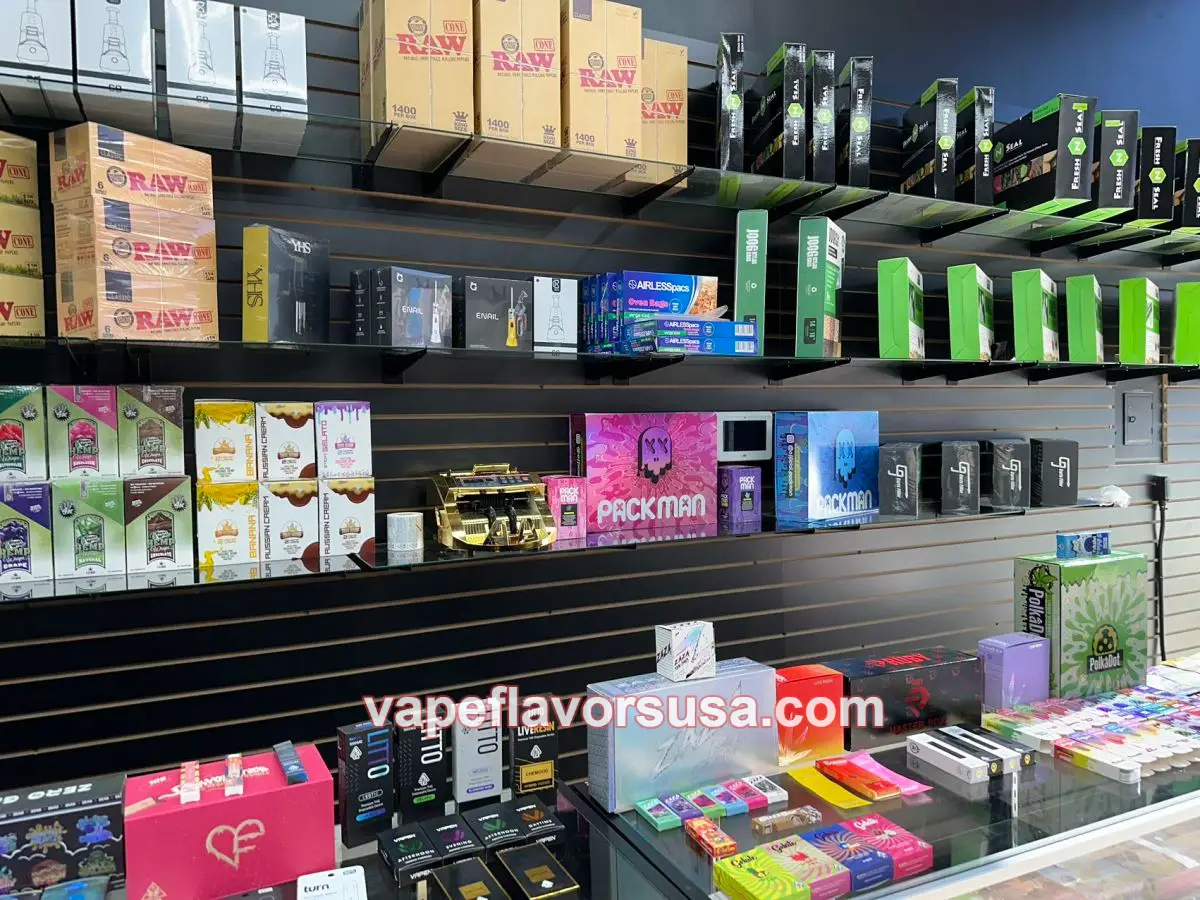The vape market in the United States has been skyrocketing, especially with the rise of innovative products like nicotine pouches, heat-not-burn devices, and e-cigarettes that are taking over the scene. The demand for these products is now so high that several states, including Florida, New Jersey, and New York, are seeing significant supply shortages, particularly for popular brands like ZYN.

ZYN, a nicotine pouch product manufactured by Philip Morris International (PMI) through its acquisition of Swedish Match in 2022, has been particularly affected. In fact, reports from multiple retail outlets across the country indicate that ZYN has been out of stock for weeks, with wholesalers struggling to get shipments. This surge in demand for nicotine pouches, a type of “vape” product, reflects the growing trend of consumers looking for alternatives to traditional smoking.
The Vape Revolution: A New Generation of Smokers

If you haven’t noticed it yet, the vaping revolution is real. Smokers, especially younger ones, are increasingly turning to e-cigarettes and nicotine pouches as alternatives to cigarettes. These products, often marketed as less harmful, have been making a dent in the tobacco market. Companies like Philip Morris are pouring resources into pushing these “safer” options. For instance, ZYN, which offers nicotine pouches in various flavors and strengths, has become a major player in the vaping scene.
But why are so many people—particularly in the U.S.—making the switch? The appeal of vapes, compared to traditional smoking, is simple: they’re marketed as offering a cleaner, more discreet alternative with far less stigma. And when you combine this with convenience, flavors like mint, citrus, and berry, and the fact that they don’t involve burning tobacco, it’s clear why they’re attracting a younger crowd.
For example, New Jersey and Florida are seeing some of the highest demand, with ZYN’s popularity growing exponentially. However, with this surge comes a complication: supply chains are struggling to keep up. Local vape shops and distributors in these areas are reporting that stock is running out faster than it can be replenished. The shortage is so pronounced that some retailers are being forced to limit the number of products customers can purchase at a time, a move that only seems to fuel the desire for the product even more.
The Rise of Alternative Nicotine Products
The increasing popularity of nicotine pouches and vape products comes at a time when more smokers are looking to quit, or at least reduce their exposure to harmful chemicals found in traditional cigarettes. Ploom X, an advanced heated tobacco product from Japan Tobacco International (JTI), is another example of this shift in consumer behavior. Recently launched in Italian duty-free shops at Milan Malpensa Airport, Ploom X is part of a broader industry movement towards less harmful alternatives to smoking. The device, which heats tobacco instead of burning it, offers a “cleaner” experience without the smoke and ash associated with traditional cigarettes.
Ploom X’s launch is noteworthy because it reflects a global trend toward reducing the risks of smoking while still satisfying the cravings for nicotine. The device uses JTI’s HeatFlow technology, ensuring an optimal distribution of heat, which results in a smoother and more intense flavor experience. JTI claims that its Ploom X technology reduces harmful substances by up to 95%, making it a viable alternative for smokers seeking to minimize the negative health impacts of traditional cigarettes.
Despite all the buzz around new technologies like Ploom X, the rapid increase in demand for nicotine pouches like ZYN has become the talk of the town. These products, which often come in flavors like wintergreen, cinnamon, and mango, are quickly taking over as the go-to option for smokers looking for a no-mess, discreet, and customizable experience.
Youth Vaping: A Growing Concern
One of the most troubling aspects of the vaping trend is its growing popularity among young people. In Poland, for example, statistics show that nearly 23% of teenage girls and 21% of teenage boys aged 13 to 15 are using vapes. These numbers put Poland at the forefront of youth vaping in Europe. While many argue that e-cigarettes are a safer alternative to smoking, experts have raised concerns about the long-term health risks of nicotine addiction and exposure to chemicals in vape liquids.

This issue is especially relevant in light of recent statistics showing a sharp increase in the sales of disposable vapes in Poland. In 2023, more than 100 million disposable vapes were sold in the country, compared to just 32 million in 2022. This surge has prompted the Polish government to take action, considering a nationwide ban on disposable vapes and stricter regulations on sales to minors.
The rise of youth vaping is also a hot topic in the U.S., where many states have implemented or are considering stricter regulations on the sale of flavored vapes. Critics of the industry argue that flavored nicotine products are being marketed directly to teenagers, potentially leading to an epidemic of nicotine addiction among young people. In response, some states have started cracking down on the availability of flavored vapes and limiting where and how these products can be sold.
The Need for Responsible Vape Disposal
As the popularity of vaping grows, so does the need for responsible disposal of vape devices and their components. In the U.K., for example, the Aberdeen City Council has partnered with Veolia to introduce a “safer” way of recycling vapes. As part of this initiative, designated bins have been placed throughout the city, where consumers can drop off used vape devices and disposable e-cigarettes.
This initiative aims to mitigate the environmental impact of vapes, which contain valuable materials like lithium, aluminum, and copper. Recycling these components not only helps reduce waste but also recovers materials that can be used in other industries, such as electric vehicle battery production. This move is also a response to the growing volume of e-waste in the U.K., as the number of discarded disposable vapes continues to rise. According to a report from Material Focus, the number of disposable vapes discarded in the U.K. increased from 1.3 million a week to 5 million a week in just one year.
Vape waste is becoming a serious issue, with many disposable e-cigarettes ending up in landfills, contributing to pollution. With many of these devices containing non-rechargeable batteries, the proper disposal of these products is critical. For now, this recycling program is only available in the U.K., but it could serve as a model for other countries looking to address the growing issue of e-waste.
Global Legal Battles: Panama’s Vape Ban Reversed

On a broader scale, countries around the world are grappling with how to regulate vaping products. In Panama, the country’s Supreme Court recently reversed a ban on all vape products, declaring it unconstitutional. This legal victory for vape consumers came after a lawsuit filed by the Panama Tobacco Association (ARDT), which argued that the ban violated the right to health by depriving smokers of lower-risk alternatives to traditional tobacco products.
The decision is significant because Panama was one of many Latin American countries to impose a complete ban on vapes. Other countries in the region, such as Brazil and Mexico, have also enacted similar measures, citing concerns over the potential health risks of vaping. However, Panama’s high court ruled that the ban did not follow proper legislative procedures, and that it infringed upon citizens’ rights.
This ruling in Panama highlights the ongoing debate about how best to regulate vaping products globally. While some countries take a hard stance against e-cigarettes and vape products, others are beginning to recognize the potential benefits of harm-reduction alternatives for adult smokers.
Conclusion: Vaping’s Complex Future
The vape market in the U.S. and around the world is evolving rapidly, with innovations like ZYN nicotine pouches, Ploom X devices, and flavored vapes gaining popularity. But as the market grows, so does the complexity of its regulation and its impact on public health. While some consumers see these products as a safer alternative to traditional cigarettes, concerns over youth vaping, environmental impact, and proper regulation continue to loom large.
The surge in demand and subsequent supply shortages indicate that the vaping industry is only going to get bigger. However, as the debate continues, it will be crucial to strike a balance between consumer choice and public health concerns. For now, the vape industry remains a dynamic and ever-changing landscape, with both challenges and opportunities ahead.


The article gives a solid overview of the growing vape trend in the U.S. and its effects on the market. It covers supply shortages, which I found pretty eye-opening. However, I feel it could dive deeper into the long-term impact of these shortages on consumers. Still, a good read for anyone inte